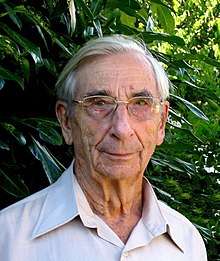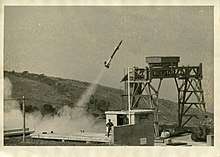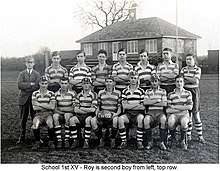Ronald Hugh Barker
Dr Ronald Hugh Barker (1915 - 2015) PhD, BSc, FIEE, FinstP, Ceng, FIMechE. was a gifted scientist and committed IET member for 70 years. Born in Dublin in 1915, Barker had an erratic education but excelled in mathematics becoming keen on electronics. He is best known for his ground-breaking work on synchronising digital communication systems and framing of received data. These digital codes are known as Barker code. The method was initially researched at SRDE Royal Signals Research Establishment, just after World War two for use in radar, rocket telemetry and digital speech. In 1952 Barker found 7 Barker sequences up to a length of 13 useful for correlation. These sequences are referred to as codes and are widely used in most data transmissions today. Examples of applications are radar, mobile phone, technology, telemetry, digital speech, ultrasound, imaging and testing. The list goes on.

Early career
Barker is most notable as inventor of Barker code or Barker sequence, a means of checking the synchronisation and framing of received data. This is used in most forms of data transmissions within (and out of) our world today as the use of a Barker code is needed for accurate reception of the data. A sequence of binary digits has very little meaning unless the significance of the individual digits is known.
Roy Barker (as he was known) was a gifted scientist and committed member of Institute of Engineering and Technology (IET) for over 70 years. Jobs for scientists were not difficult to find and in 1941 Barker joined Standard Telephones and Cables(STC) North Woolwich, in their thermionic valve department designing dental X-Ray tubes and equipment. After a bombing raid over Woolwich, Roy cycled back to Heath and Reach where he met his wife to be Wendy Emily Hunt (1917-1998) who came from South Croydon. STC's thermionic valve manufacture had plans to move from Woolwich to Ilminster, Somerset. He resigned as his work on X-ray tubes was far from satisfactory being unrelated to the war effort. During the WW 2 Barker had a reserved occupation. He took up a new and much more interesting post as a temporary experimental officer at the Signals Experimental Establishment (S.E.E)[1] initially on Woolwich Common although it was soon moved to Warnham Court, English: In 1942 the Signals Experimental Establishment moved from Woolwich Common, London into Warnham Court, Horsham, England (requisitioned from the Lucas family)Horsham

Here he assisted with the design of Wireless Set No.19 [2] This was a standard WW2 tank wireless set used in every theatre of operation. From there Barker went on to design portable two way radio sets for jungle use.
The S.E.E was subsequently renamed Signals Research and Development Establishment (SRDE) and brought within the Ministry of Supply. Staff were moved to Christchurch, Dorset in the summer of 1943. The UK guided weapons program came into being in 1944. The first experimental system was named LOPGAP, acronym of Liquid Oxygen Propelled Guided Anti-aircraft Projectile. Barker was given responsibility for the telemetry[3] equipment. This project had top priority so it was easy to make rapid progress. Initial firings were at Ynyslas in Wales prior to construction of special guided weapons range at the Defence Evaluation and Research Agency site, Aberporth,[4] Wales. In 1946 R H Barker read a paper describing his system at an international conference on telemetry at Princeton University, US.
Post War Career

At the end of the war Barker was appointed as a senior scientific officer when he took over speech cryptography, the technique for the encryption of speech was to first encode digitally the speech waveform (in much the same way as was used later for digital recording of music) and to then scramble the stream of binary digits by multiplying it (bit by bit) by a second stream produced synchronously in a code generator. The latter was a really special purpose digital computer programmed to produce a pseudorandom sequence. This work brought Barker into contact with a lot of early work on computers in England and the US. Still at SRDE Barker had a team of twelve scientists as the work on applications of digital electronics had been extended to include gun fire-control, servo systems and communication by pulse code modulation[5] (digital speech). A lot of information about SRDE is held at The Red House Museum and Gardens, Christchurch, England.
Two aspects of his work became well known.
- The first being z-transform method of analysing the behaviour of such systems (see IEE monograph No43, July 1952.[6]
- The second was a method known of synchronising digital communication systems using what is now known as a Barker sequence or Barker code. The original paper was entitled "Group Synchronisation of Binary Digital Systems".[7] This method is used for space communications such as the Galileo Mission.
A Dictionary of Computing [8] defines a Barker sequence.[9]
In April 1954 Barker was promoted to Senior Principal Scientific Officer, this was the end of his personal research and the beginnings of an administrative career. The new job was Assistant Director to Ministry of Supply headquarters, New Oxford Street, London. The headquarters work was tedious and in 1957 Barker returned to SRDE Steamer Point,[10] Christchurch as Superintendent of Research in charge of the site. In 1959 Barker took a job as Deputy Director of the Central Electricity Research Laboratories (CERL) Leatherhead, Surrey responsible for day-to-day running of the Laboratories and recruitment needed to increase the scientists from 250 to 600. It was during this period that Barker became more active in the Institute of Electrical Engineers (IEE). Barker joined as a corporate member in 1945 and elected Fellow in 1962, serving on various committees of the Power Division and of the Control and Automation Division becoming chairman[11] in 1971.[12] Barker became a member of the council and served on the important Membership Council for many years and for a time on the Automatic Control Committee.
They say the grass is greener on the other side and Barker was offered a Directorship on the main board with the Pullin Group of companies[13] in 1964. The company was involved with sonar equipment for the Royal Navy under detailed supervision of the Admiralty Underwater Weapons Establishment. The company did not have the financial resources and there was little scope for innovation. The promises made at appointment had been misleading. After the company was taken over by the Rank Organisation there was little scope left for research nor in the way the company was run. In 1965 Barker made his last career move to become Deputy Director of the Royal Armament Research Establishment RARDE at Fort Halstead, in Kent at chief scientific officer level. Here, Barker having had line management experience in industry now had a much greater level of responsibility. In 1965 there were 2,500 staff at RARDE and Barker was responsible for half the scientific branches and staff. The research work being undertaken was into and assessment of non nuclear weapons systems. Barker retired in May 1979.
Over the years digital technology has advanced significantly but Barker codes remain at the core of transmissions.[14] Many scientific papers have been written and published that have found Barker Code to be the best and most efficient means to transmit data. Since his original paper was published no other codes have been found.[15][16] (It has been proven that there are no further odd-length codes,[17] nor even-length codes of N < 1022.[18])Examples of applications are radar, mobile phone technology, telemetry, digital speech,[19] ultrasound imaging and testing.
Personal Details
Born in Dublin his early education years were disrupted by his father's frequent periods of unemployment and moves between Dublin and England. His father Ernest William Barker born 1880 in Harpenden (1881 census) found it difficult to find work as a stained glass window artist and travelled to do so often staying in lodgings that were grim. For much of the time Roy and his mother Linda Annie Taylor (1885- 1944) a school teacher, lived with her parents (John and Elizabeth Taylor) in Thomas Street, Heath and Reach, Bedfordshire.Heath was the family home for several generations. The Taylor's were also extremely poor but despite this were very supportive. Matters weren't helped when his father died in 1929. At age 13 Barker was interviewed by the headmaster, Mr F Fairbrother of a new school, The Cedars now Cedars Upper School, Leighton Buzzard. This was followed by an entrance examination. Considerable allowance must have been made for the fact that he had come back from Ireland. He was duly admitted to the school where he stayed until 1934. In the VIth form his main subjects were chemistry, physics and mathematics and also played in the 1st XV Rugby team. It was whilst at The Cedars that Barker took an interest in things electrical and radio, building his first crystal radio followed by three valve radios. In those days some of the electrical components were home made including coils and loudspeakers. Barker excelled at mathematics and won a scholarship to University College Hull . However, only part of the fees were covered and Barker was still heavily dependent upon both Linda and her sister Grace (1887-1998). At the University of Hull Barker gained a 1st class honours degree in physics awarded by University of London 1954 Faculty of Science London University.

In 1943 he married Wendy Hunt at St Augustine's church[20] in South Croydon and enjoyed a happy marriage for 50 years. Whilst at SRDE, Wendy and Roy had two sons Clive and Peter. Having started with a humble life and brought up in tough times he took every opportunity not to waste money. Roy preferred to repair and maintain both mechanical and electrical equipment whenever he could. He was very inventive too building lots of electronic gadgets virtually from scratch including model radio control equipment and home made burglar alarm systems. Having been taught some music by his mother Roy became a self taught and proficient classical piano player until his fingers lost the required dexterity.
After his wife Wendy died in 1998 from cancer, he lived on his own for the next seventeen years. Throughout his life Roy was keen for the family to meet and keep in touch especially when there was an occasion to celebrate. He was a keen contract bridge player too, he found this very sociable and challenging at times. He belonged to three bridge clubs, playing duplicate bridge at county level. He was still playing at his local bridge club in Verwood until just after his 99th birthday as well as on the computer. He was very environmentally friendly never wasting what could be used later, for example measuring out the water to be heated in the electric kettle for a cup of tea. Roy was not miserly though. The fact is he was very generous to family, friends and charity. Roy Barker passed away on 7 October 2015, his work and dedication being recognised in his obituary published by the IET in IET Obituary News.
References
- https://discovery.nationalarchives.gov.uk/details/r/C555
- "Wireless Set No. 19". November 22, 2019 – via Wikipedia.
- Barker, Ronald (1956). "A transducer for digital data-transmission systems". IET. 7 (103): 42–51. Retrieved June 12, 2020.
- https://coflein.gov.uk/en/site/310497/details/defence-evaluation-and-research-agency-royal-aircraft-establishment-aberporth
- Barker, Ronald (October 1952). "The pulse transfer function and its application to sampling servo-systems". IET. 99 (71): 517–520. doi:10.1049/pl-2.1952.0120.
- Barker, Ronald (1952). "The pulse transfer function and its application to sampling servo systems". IET Digital Library. 99 (71): 302–317. doi:10.1049/pl-4.1952.0032.
- Published in Communication Theory, edited by W Jackson, London,UK, Butterworths 1953 pp273-287.
- Butterfield, Andrew ButterfieldAndrew; Ngondi, Gerard Ekembe NgondiGerard Ekembe; Kerr, Anne KerrAnne (January 21, 2016). Butterfield, Andrew; Ngondi, Gerard Ekembe; Kerr, Anne (eds.). Barker sequence. Oxford University Press. doi:10.1093/acref/9780199688975.001.0001/acref-9780199688975-e-327 – via www.oxfordreference.com.
- Barker, Ronald (2016). Oxford Dictionary of Computer Science (7th edition ed.). On line: Oxford University Press. ISBN 9780191768125. Retrieved 2020-06-01.CS1 maint: extra text (link)
- https://www.christchurchdorset.co.uk/steamerpoint.htm
- Chairman's address, "Communications in Control" in Proceedings of Institution of Electrical Engineers, Vol 119 No 1 pp77-82 Jan 1972, doi,10.1049/piee.1972.0014
- "IEE Division Chairmen 1971-72". ieeexplore. IET. Retrieved 2020-06-02.
- Barker, Ronald (September 1962). "Electrets". Institute of Electrical Engineers. 8 (93): 413–416. doi:10.1049/jiee-3.1962. Retrieved June 12, 2020.
- "Barker Code". Science Direct. Science Direct.
- Weisstein, Eric W. "Barker Code". MathWorld.
- http://www.math.wpi.edu/MPI2008/TSC/TSC-MPI.pdf
- Turyn and Storer, "On binary sequences", Proceedings of the AMS, volume 12 (1961), pages 394–399
- Leung, K., and Schmidt, B., "The Field descent method", Design, Codes and Cryptography, volume 36, pages 171–188
- Hans-Peter, Ketterling. Introduction to Mobile Digital Radio. Artec House mobile communications data: Artec House Publishing, London. p. 167. ISBN 1-58053-173-3. Retrieved June 12, 2020.
- "Church of St Augustine, St Augustine's Avenue - Croydon | Historic England". historicengland.org.uk.
- Barker, Ronald (1978). Who's Who (113 ed.). London: Adam and Charles Black. p. 128. Retrieved 26 May 2020.
- Barker, Ronald (2020). Who Was Who. Oxford University Press. Retrieved 21 June 2020.